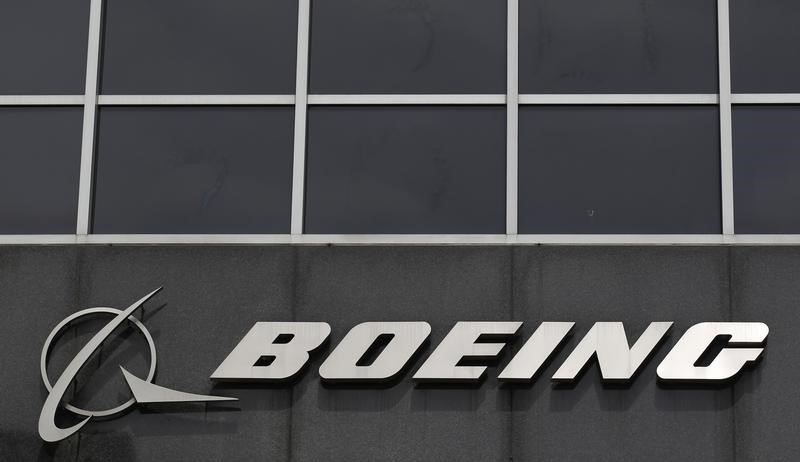By Alwyn Scott
SEATTLE (Reuters) - Boeing Co (N:BA), which loses about $23 million (14.83 million pounds) on every 787 Dreamliner passenger jet that leaves the factory, is trying to stem the losses by cutting the use of one of its signature ingredients: titanium.
The strong, lightweight alloy used extensively on the 787 costs seven times more than aluminium, and accounts for about $17 million of the cost of the $260 million plane, according to industry sources.
The push to reduce titanium costs is part of a broader, long-running effort by Boeing to make the 787 profitable that includes pressing suppliers for price cuts and adjusting assembly lines to improve efficiency, said Bob Noble, vice president of Partnering for Success, Boeing's supplier cost-cutting programme.
Boeing's other commercial planes are profitable, and on Wednesday, Boeing repeated its pledge to break even on the 787 this year on a cash basis. With titanium making up 15 percent of the 259,000 pounds an empty 787 weighs, far more than other Boeing jetliners, the material is under special scrutiny, industry experts said.
The world's largest plane maker hasn't disclosed how many billions it invested to develop the 787, which was introduced in 2011, but it has spent more than $30 billion on production, tooling and one-time costs. And it has curbed its ambitions for future planes. Former chief executive Jim McNerney said last year Boeing didn't plan any more "moonshots" like the 787.
As the Chicago-based company races to increase the pace of plane manufacturing, investors and analysts want it to lift its profits by churning out more 787s while cutting costs.
"Aerospace titanium at $20 to $25 a pound is front and centre, especially when you have the cost problems that you do on the 787," said Kevin Michaels, a vice president with ICF International, a publicly traded management, technology and policy consulting firm based in Fairfax, Virginia.
787 COSTS RISE
Commercial jetliner programs typically lose money in the early years of production until the heavy upfront investments in engineering and production are repaid. Boeing's accounting spreads those costs over a large block of planes the company expects to deliver.
Investors expressed concern in April when the 787's deferred production cost balance reached $26.9 billion, about $2 billion more than earlier targets. The tally is a gauge of the losses Boeing has built up making 787s so far.
Boeing said the 787 deferred cost balance will keep rising until 2016, when the company plans to begin turning out 12 of the planes a month, up from 10 currently. At that point, Boeing expects the balance will start decreasing.
Overall, Boeing said it earns a operating profit margin of 10.5 per cent in its commercial jetliner business, including sales of planes and related services.
The 787 represents Boeing's bid to reinvent the civilian jetliner, using lightweight carbon fibre and new engines to allow it fly farther and burn 20 percent less fuel than current jets made largely of aluminium. Unlike aluminium, which corrodes when it comes into contact with carbon fibre, titanium works well with carbon fibre and expands minimally in response to the large temperature swings the big jets experience.
But the 787 now faces dual competition from Airbus: its own carbon-composite plane, the A350, and a low-cost alternative, the A330neo, based on an older aluminium design updated with new, fuel-efficient engines.
Those are likely to keep price pressure on both plane makers, "especially in a low oil price environment," said Russell Solomon, aerospace analyst at Moody's Investor Service.
While the rising level of deferred costs affects the 787's ultimate profitability, Solomon said, "it's the ongoing cost that we're really paying attention to."
As part of its cost-reduction effort, Boeing considered shifting to less costly aluminium for seat tracks on the 787, industry sources say. Boeing said it didn't end up making the change, but declined to say why.
Boeing has changed the cockpit window frame to aluminium from titanium, and has changed the frames of some doors to composite from titanium. Special coatings or materials are used to prevent aluminium corrosion, experts said. It wasn't known how much Boeing saved by the change. Boeing declined to comment.
Boeing said it also is "aggressively pursuing" recycling to recapture the waste metal "chips" created as titanium parts are machined into finished shapes.
BUYING 40 POUNDS TO GET 1
The company is looking for even greater savings in its supply chain and production methods. The changes are not likely to affect raw metal prices, but could reduce the sales of some suppliers, and stem concern about supply constraints from Russia, experts said.
One large 787 piece, used to help join the wings to the body, shows the potential for saving. The piece, known as the double plus chord, requires Boeing to buy about 40 pounds of titanium for every pound that ends up flying on the aircraft, said Bill Bihlman, president of metal consultancy Aerolytics LLC.
After the piece is forged, a large amount of the outside must be ground off, leaving interior metal with intact grain and strength. Add in the high cost of machining hard metals like titanium, and the value of such pieces soars.
"You can see why there's so much emphasis on titanium," Bihlman said.
Noble, the Boeing official, declined to discuss specific parts, but said pieces with high "buy-to-fly" ratios are a focus.
"There are a whole lot of strategies we can use to reduce the buy-to-fly," he said.
But substituting other metals won't be easy, Bihlman said. Steel weighs 65 percent more than titanium, and aluminium lacks titanium's strength and has the corrosion problem.

But even though the titanium savings may ultimately be modest, Bihlman said, Boeing will wring them out "because they have to."